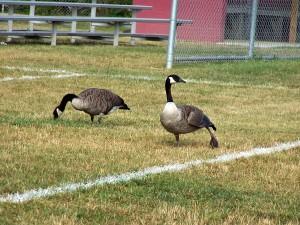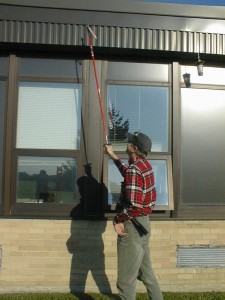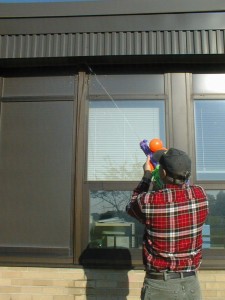Although beautiful in flight and valued as a symbol of the wild, Canada Geese frequenting school grounds, including athletic fields, are a growing concern.
Come and learn about goose biology and behavior, the legal framework for dealing with goose problems, alleviation techniques available to schools, and the long-term management of geese and goose problems.
Seminar fee of $15 to cover refreshments and lunch. To register, please contact by July 28, Patti Ogden (pogden@questar.org). For more information, contact Craig Hansen (Craig Hansen (CHansen@questar.org) or Lynn Braband (LAB45@cornell.edu).
WHEN
August 4, 2015, 11:00 – 4:00
WHERE
Questar III BOCES, 10 Empire State Blvd., Castleton-On-Hudson, NY 12033 – Directions
AGENDA
11:00 – 11:30 Registration
11:30 – 11:45 Introduction to the seminar – Lynn Braband, NYS IPM Program
11:45 – 12:00 Break for working lunch
12:00 – 1:15 Basic biology of Canada Geese (including human health concerns) & goose problem management (short-term & long-term) – Paul Curtis, Cornell University’s Department of Natural Resources
1:15 – 2:00 Regulations associated with managing goose problems – Ken Preusser, USDA Wildlife Services
2:00 – 2:15 Break
2:15 – 3:00 Turf management and geese – Joellen Lampman, NYS IPM Program of Cornell University, and David Chinery, Cornell Cooperative Extension of Rensselaer Co.
3:00 – 3:30 Sharing your experiences & concerns – Including goose dog demonstration
3:30 – 4:00 Wrap-up & Evaluation





